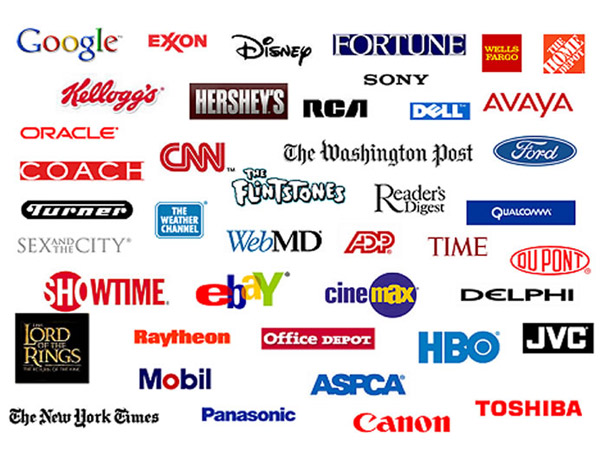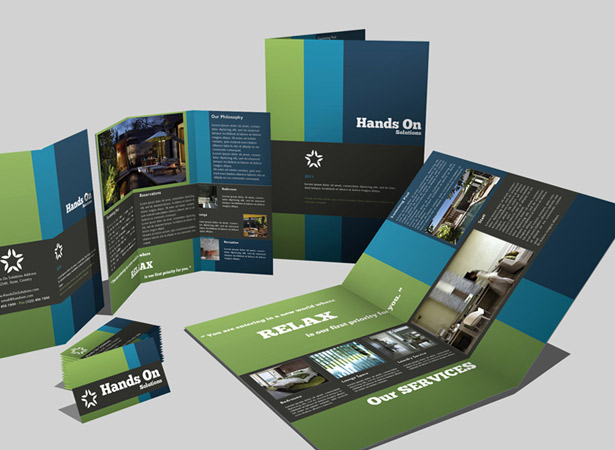 When you start working with clients you have to understand that the work you produce is not just about how good or bad a design is. It has a lot to do with the way the design fits into the wider spectrum of things.
Does this design fall in line with the overall theme of the company?
Does this design 'say' what the company tries to say?
In some instances and with some clients, you don't even have to make a 'great' design, however, you are expected to make something that would be well received by the company and their audience.
Being aware of this is being aware of the branding of a company.
When you start working with clients you have to understand that the work you produce is not just about how good or bad a design is. It has a lot to do with the way the design fits into the wider spectrum of things.
Does this design fall in line with the overall theme of the company?
Does this design 'say' what the company tries to say?
In some instances and with some clients, you don't even have to make a 'great' design, however, you are expected to make something that would be well received by the company and their audience.
Being aware of this is being aware of the branding of a company.
What is branding and why is it important?
 A quick lesson on branding: Companies should be trying to brand their company (especially if they believe they have a unique service or product to offer). The benefits of branding are often long term, but include customer qualities like loyalty, memorability familiarity and at some point, your marketing expenses will significantly decrease because an audience is already familiar with you. All that stuff sounds good, HOWEVER, the catch is that the company is not in direct control of the brand. In a nutshell, branding is the perceived emotional image of a company as a whole and, in its simplest form, has nothing to do with things like logos and stationary as many designers will lead you to believe.
Branding is a fairly complicated subject because typically the company's management and the designer are trying to figure out how to brand the company, or how to find a way in which the company will be unique and find a place in the customers mind; but it's really not about what the management and the designer want, branding really relies on the perception of the audience. So the next question is, 'How do you find out what your audience is thinking?'
The answer is pretty simple: by doing marketing research—in its simplest form, this could be a survey sent to past customers asking them their perception of the company. The main goal here is to understand your audience and what they think about your company. The next step is how to capitalize (or fix) that perception. That's branding!
A quick lesson on branding: Companies should be trying to brand their company (especially if they believe they have a unique service or product to offer). The benefits of branding are often long term, but include customer qualities like loyalty, memorability familiarity and at some point, your marketing expenses will significantly decrease because an audience is already familiar with you. All that stuff sounds good, HOWEVER, the catch is that the company is not in direct control of the brand. In a nutshell, branding is the perceived emotional image of a company as a whole and, in its simplest form, has nothing to do with things like logos and stationary as many designers will lead you to believe.
Branding is a fairly complicated subject because typically the company's management and the designer are trying to figure out how to brand the company, or how to find a way in which the company will be unique and find a place in the customers mind; but it's really not about what the management and the designer want, branding really relies on the perception of the audience. So the next question is, 'How do you find out what your audience is thinking?'
The answer is pretty simple: by doing marketing research—in its simplest form, this could be a survey sent to past customers asking them their perception of the company. The main goal here is to understand your audience and what they think about your company. The next step is how to capitalize (or fix) that perception. That's branding!
Why is branding necessary?
 Every good company should be trying to create a brand and not just creating a company or a nice product. A nicely branded company has placement in your mind--when you think of innovation, perhaps you think of Apple Products. When you think of graphic design, you may automatically think of Adobe Products or Photoshop directly. These are just examples of what good branding is and how they create an attachment with their audience.
When you create a business without really throwing attempts at branding it, your audience will kind of lose sight of it and most times think of it as a copycat business or nothing to really write home about. Worst of all, you may not have an audience at all! The best way to find out if your client is serious, is to ask them what they would like their brand to be perceived as. If they don't have a decent answer (that makes sense: saying 'We want to be the next Photoshop' doesn't count), then they aren't serious about their business and desire no long term success.
Every good company should be trying to create a brand and not just creating a company or a nice product. A nicely branded company has placement in your mind--when you think of innovation, perhaps you think of Apple Products. When you think of graphic design, you may automatically think of Adobe Products or Photoshop directly. These are just examples of what good branding is and how they create an attachment with their audience.
When you create a business without really throwing attempts at branding it, your audience will kind of lose sight of it and most times think of it as a copycat business or nothing to really write home about. Worst of all, you may not have an audience at all! The best way to find out if your client is serious, is to ask them what they would like their brand to be perceived as. If they don't have a decent answer (that makes sense: saying 'We want to be the next Photoshop' doesn't count), then they aren't serious about their business and desire no long term success.
Brand recognition and consistency
 The ultimate goal of a company, is to win the hearts and minds of your consumers. Once you've done that, you have achieved what is called 'brand recognition.' This means your audience knows the company well enough to know what they may or may not say, and what they may or may not look like.
As a designer, you try to help with the recognized look of a company. For example, if you see a red bullseye, you may automatically think of Target Stores. If you are a designer working with Target Stores, you better believe you aren't designing something using predominately blue squares—that's just not that brand. You want to create something that is consistent and adds to a company's brand and if you are working with a company that does not have an established brand, you want to create something that works within the views of the company. For example, if I'm working with a brand new music studio start up that wants to focus on traditional country music, I'm not going to give them something that looks like it was made for a pop star.
Consistency is absolutely key if a company wants an audience to recognize them. Recognition also works in a way that creates placement in a persons thought patterns. This recognition and placement can work positively for one company and maybe even negatively for another. For example, some people think that Volvos are some of the safest cars or Chevrolets are gas guzzling machines—positive and negative effects. In another example, a car might try to brand itself as a super safe car, but an audience may feel its safety features aren’t better than a Volvo, so they just end up getting a Volvo.
Once your audience has clamped on to that recognition or that placement, if it’s positive, you want to do everything you can to continue with it. If it’s negative you want to do everything you can to change it. Recognition and placement for brands can end up pushing sales harder than any marketing or advertising plan.
The ultimate goal of a company, is to win the hearts and minds of your consumers. Once you've done that, you have achieved what is called 'brand recognition.' This means your audience knows the company well enough to know what they may or may not say, and what they may or may not look like.
As a designer, you try to help with the recognized look of a company. For example, if you see a red bullseye, you may automatically think of Target Stores. If you are a designer working with Target Stores, you better believe you aren't designing something using predominately blue squares—that's just not that brand. You want to create something that is consistent and adds to a company's brand and if you are working with a company that does not have an established brand, you want to create something that works within the views of the company. For example, if I'm working with a brand new music studio start up that wants to focus on traditional country music, I'm not going to give them something that looks like it was made for a pop star.
Consistency is absolutely key if a company wants an audience to recognize them. Recognition also works in a way that creates placement in a persons thought patterns. This recognition and placement can work positively for one company and maybe even negatively for another. For example, some people think that Volvos are some of the safest cars or Chevrolets are gas guzzling machines—positive and negative effects. In another example, a car might try to brand itself as a super safe car, but an audience may feel its safety features aren’t better than a Volvo, so they just end up getting a Volvo.
Once your audience has clamped on to that recognition or that placement, if it’s positive, you want to do everything you can to continue with it. If it’s negative you want to do everything you can to change it. Recognition and placement for brands can end up pushing sales harder than any marketing or advertising plan.
How designers contribute to brand consistency
 Design is only a small portion of branding. Creating a super sweet logo and letterhead doesn't mean a ton if the consumer doesn't have a great perception of the company. However, good brand design can help build a solid foundation for a brand. If the brand is to be known for their scholastic wealth and achievements, you want to create something that gives off that feeling. If a brand has a product that is designed to make the consumer happy, don't create or use anything that could do otherwise. Pick an idea or feeling and nail that down as best as possible.
Designers can also contribute to branding through creating work that is consistent with the views and perception of the clients company. Something all designers (and companies, for that matter) must understand is good design equals good quality. When you really brand something in a consumers mind, it can really stand out for ever, for example color schemes and logos are really memorable and help create a good foundation or start of branding. You want to keep this in mind so that you make something that can be EASILY remembered, rather than easily forgotten. When you are working for a company that isn't quite new and isn't quite old, just try to create something that follows along with the design and perception that they already have going on. There's no need to re-invent the wheel (of course unless asked) but you should think of more creative ways to get across the same message they have.
Most of the branding should come from the company—what do they stand for, what do the sell, who do they cater too—so hopefully for a good designer, branding should be a breeze, as far as logos and color schemes go. Designers can also contribute not just by the design but by the way in which the design and/or the company is presented. For example, if a company sells a product that needs packaging, what is the best kind of packaging for that product and how is it designed? Or even simply, should a company have a tri-fold brochure or just a simple sell sheet. Though minute, these things have a ton to do with how a company is perceived and remembered.
Design is only a small portion of branding. Creating a super sweet logo and letterhead doesn't mean a ton if the consumer doesn't have a great perception of the company. However, good brand design can help build a solid foundation for a brand. If the brand is to be known for their scholastic wealth and achievements, you want to create something that gives off that feeling. If a brand has a product that is designed to make the consumer happy, don't create or use anything that could do otherwise. Pick an idea or feeling and nail that down as best as possible.
Designers can also contribute to branding through creating work that is consistent with the views and perception of the clients company. Something all designers (and companies, for that matter) must understand is good design equals good quality. When you really brand something in a consumers mind, it can really stand out for ever, for example color schemes and logos are really memorable and help create a good foundation or start of branding. You want to keep this in mind so that you make something that can be EASILY remembered, rather than easily forgotten. When you are working for a company that isn't quite new and isn't quite old, just try to create something that follows along with the design and perception that they already have going on. There's no need to re-invent the wheel (of course unless asked) but you should think of more creative ways to get across the same message they have.
Most of the branding should come from the company—what do they stand for, what do the sell, who do they cater too—so hopefully for a good designer, branding should be a breeze, as far as logos and color schemes go. Designers can also contribute not just by the design but by the way in which the design and/or the company is presented. For example, if a company sells a product that needs packaging, what is the best kind of packaging for that product and how is it designed? Or even simply, should a company have a tri-fold brochure or just a simple sell sheet. Though minute, these things have a ton to do with how a company is perceived and remembered.
Further Reading
Branding isn't a simple task, but once you really start to research things and understand what your client's audience is looking for, then you can be extremely successful in this area. If you want to be really great with branding, check out some of these articles:- Branding, Identity & Logo Design Explained
- A Practical Guide to Branding
- What is a Brand?
- The First Step of Building an Awesome Brand
- Brand, Innovation & Design (Presentation)
Kendra Gaines
Kendra Gaines is a freelance designer from Virginia, USA. Connect with her.
Read Next
20 Best New Websites, April 2024
Welcome to our sites of the month for April. With some websites, the details make all the difference, while in others,…
Exciting New Tools for Designers, April 2024
Welcome to our April tools collection. There are no practical jokes here, just practical gadgets, services, and apps to…
14 Top UX Tools for Designers in 2024
User Experience (UX) is one of the most important fields of design, so it should come as no surprise that there are a…
By Simon Sterne
What Negative Effects Does a Bad Website Design Have On My Business?
Consumer expectations for a responsive, immersive, and visually appealing website experience have never been higher. In…
10+ Best Resources & Tools for Web Designers (2024 update)
Is searching for the best web design tools to suit your needs akin to having a recurring bad dream? Does each…
By WDD Staff
3 Essential Design Trends, April 2024
Ready to jump into some amazing new design ideas for Spring? Our roundup has everything from UX to color trends…
How to Plan Your First Successful Website
Planning a new website can be exciting and — if you’re anything like me — a little daunting. Whether you’re an…
By Simon Sterne
15 Best New Fonts, March 2024
Welcome to March’s edition of our roundup of the best new fonts for designers. This month’s compilation includes…
By Ben Moss
LimeWire Developer APIs Herald a New Era of AI Integration
Generative AI is a fascinating technology. Far from the design killer some people feared, it is an empowering and…
By WDD Staff
20 Best New Websites, March 2024
Welcome to our pick of sites for March. This month’s collection tends towards the simple and clean, which goes to show…
Exciting New Tools for Designers, March 2024
The fast-paced world of design never stops turning, and staying ahead of the curve is essential for creatives. As…
Web Tech Trends to Watch in 2024 and Beyond
It hardly seems possible given the radical transformations we’ve seen over the last few decades, but the web design…
By Louise North

















